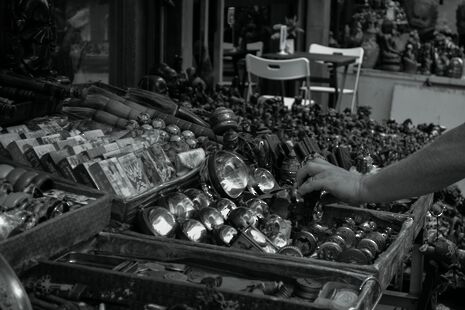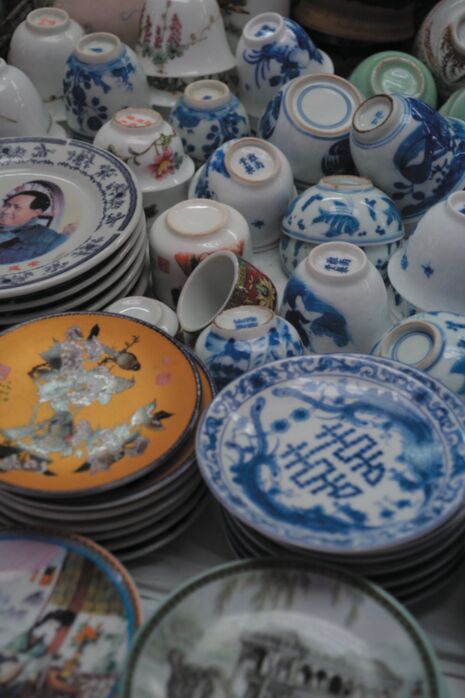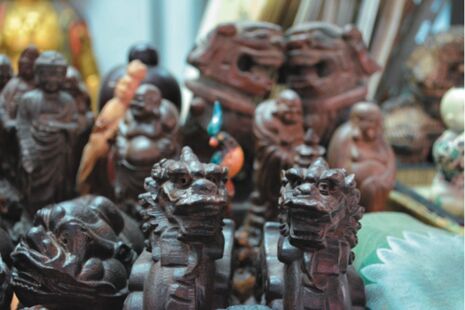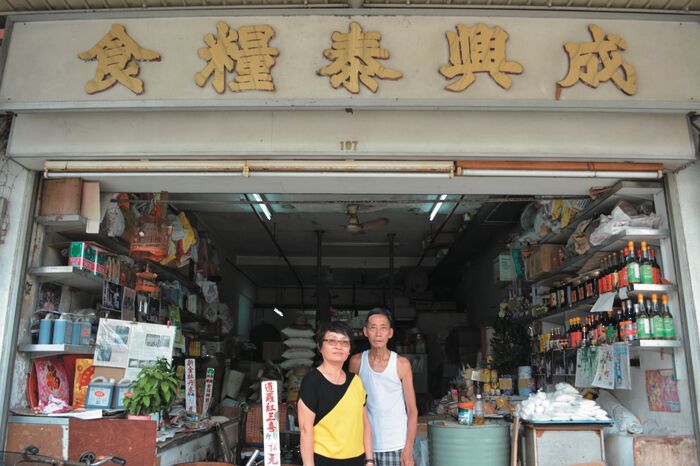Hong Kong’s Hamleys Toy Shop
Sheren Mao explores how Mr. Chan’s antique shop managed to evoke the same child-like wonder as a trip to Hamleys

I remember my first time visiting the renowned Hamleys store in London; fascination, wonder, excitement, curiosity… I could go on but these were just a few of the emotions in the wave that overcame me. As I passed by each floor, I felt like I was being sucked into a new world each time; all this, my readers, was what it felt like, sauntering around Mr. Chan’s antique shop – his 1900s take on Hamleys.
As I wandered along Cat Street, an area known for its vast range of antique collections, I noticed Mr. Chan sitting outside his shop as he fanned himself on that bright, summer day. From afar, this was what I saw: in front of him, there stood countless rows of historically significant figures moulded into mini figurines. On either side of him, lay a miscellaneous collection of beautiful ceramic bowls, plates and cups, swords detailed with intricate patterns, colourful traditional Chinese brushes and vintage clocks, and, on the wall behind him, hung numerous propaganda posters dating back to the 1900s – but this was simply a fraction of what Mr. Chan’s shop had to offer.


“Golden rule number one: only an item that has over 100 years of history can be classified as an antique,” Mr. Chan firmly tells me. “To be able to differentiate between a real and fake antique isn’t easy, and it is a skill that takes years and years to master. Because of this, “know-it-all” customers are really the most difficult people to serve. Why? Well, when I have a customer stubbornly claiming that an antique is fake even if I honestly tell them it is real, there is nothing I can do about it. This is because of golden rule number two: in order to be a successful businessman, your customer is always right.”
Noticing the seemingly random positioning of the antiques around the shop, I expressed my interest in whether or not there was actually any particular significance to how everything was placed. Mr. Chan chuckled and leaned in, “Well, we have a general rule of thumb where antiques costing as little as HKD$10 are displayed at the front of the shop, while those more expensive ones up to HKD$10,000 are stored further in. It should be no surprise of how wide our price range is as many of these antiques cannot be recreated again, which naturally places them at the higher end of the price spectrum.”

Seeing how many foreign visitors came around to Mr. Chan’s shop during our conversation, I became inclined to think that maybe this wasn’t such a lonely job after all; unlike how some other traditional industry owners spend almost all of their day by themselves, antique sellers still somewhat have the company of their customers. However, I then came to realise what a naive thought this was when Mr. Chan opened up about his dejected feelings towards his job and this industry.
“This life,” he gestured to the antiques surrounding him, “all began when my classmate introduced me to work in his father’s antique shop. Back then, I needed money so there wasn’t much of a choice. Little did I know this would become my life for the next 60 years. Even if I wanted to work in another industry today, what chances would I have? My knowledge is only limited to antiques, so what has been keeping me going each day is merely the sole motivation of making a living.”
He paused, letting out a long sigh and continued, “It’s not easy to admit, but I do get quite lonely. The only companionship I receive here is from the nearby shop owners I have known for a long time. Despite so, I cannot share or vent much about my deeper secrets and emotions to anyone, so I have come to learn and become used to keeping it all in.”
When asked about the future prospects of the antique industry, Mr. Chan’s response was, really, no different from the many traditional industry owners I had already conversed with. He emphasised the negative effect the Internet’s convenience for online shopping has on reducing people’s patience to visit and purchase from a shop. Sadly, it was this hands-on experience of searching for an antique in a sea of goods that made buying them so fulfilling, a kind of physical and emotional reward that remains so special to this diminishing industry.
 News / Eight Cambridge researchers awarded €17m in ERC research grants27 December 2025
News / Eight Cambridge researchers awarded €17m in ERC research grants27 December 2025 News / Clare Hall spent over £500k opposing busway 24 December 2025
News / Clare Hall spent over £500k opposing busway 24 December 2025 Comment / League tables do more harm than good26 December 2025
Comment / League tables do more harm than good26 December 2025 Comment / The ‘class’ of Cambridge24 December 2025
Comment / The ‘class’ of Cambridge24 December 2025 News / Caius mourns its tree-mendous loss23 December 2025
News / Caius mourns its tree-mendous loss23 December 2025









